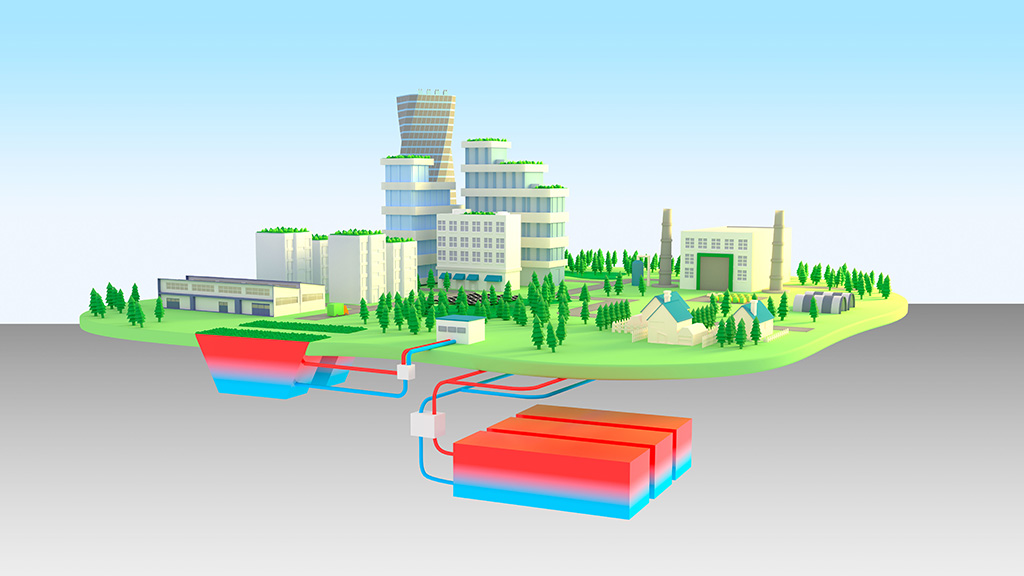Seasonal Storage of Thermal Energy to Improve the Sustainability of Europe’s Energy Supply
One of the biggest challenges for renewable energy is its long-term storage. A new European joint project INTERSTORES investigates the next generation of seasonal thermal energy storage systems. The aim is to improve the performance, cost-effectiveness, and reliability of thermal energy storage.

The starting point for the project is to identify the best ways to build new types of thermal energy storage systems and integrate them into regional energy systems. Both in Finland and more widely in Europe, there is a need for thermal energy storage systems that are competitive in terms of performance and cost. In summer, there is a known abundance of extra thermal energy available, while in the colder months of winter there is a greater need for it.
Several thermal energy storage systems are already in operation. In Finland, for example, some former oil storages (rock caverns) have been converted into thermal energy storages for district heating systems to smooth out peaks and troughs in thermal loads. The storage material is water. Solar thermal systems with borehole thermal energy storage have also been built. In these cases, the storage system consists of dozens or even hundreds of wells that are used to charge and discharge thermal energy from the ground.
However, there are still few large-scale thermal energy storage systems. High investment costs and associated financial risks are often a barrier. There is also a lack of practical tools for designing storage systems and connecting them to the regional heating network.
Storage solutions to be developed through the construction of thermal energy storages during the project
During the INTERSTORES project, two different types of full-scale thermal energy storages are built, both of which will be connected to the local heating network. One of the sites is the world’s largest high-temperature cavern storage facility in Vantaa, which will hold around one million cubic metres of water. The second is a low-temperature water-gravel-filled thermal energy storage to be constructed in the former fire-fighting water pools of a former industrial site in Ingolstadt, Germany.
What’s new in the Vantaa cavern storage is a maximum temperature of over 100 degrees Celsius, which is higher than ever before, and a larger size than other cavern storages. What’s new in the German thermal energy storage is the conversion of the existing pool infrastructure to a new use. The project aims to highlight the potential for innovation, optimisation, and replicability of these two very different storage solutions.
The Geological Survey of Finland GTK will focus on the bedrock surrounding the cavern storage. A model of the bedrock is being created, combining geological and thermal modelling at a concrete site on a large scale.
“The project will simulate the behaviour of the bedrock during the cyclic charging and discharging of the storage. GTK is responsible for estimating the cavern storage losses through modelling and simulation. We are also studying the suitability of the cavern storage concept for different geological environments and planning long-term monitoring of the Vantaa cavern storage environment,” says Markku Hagström, Senior Specialist at GTK.
The research aims to show how large thermal energy storage systems can be built efficiently and with respect for the environment. The aim is to optimise the use and improve the performance of thermal energy storage systems, reduce production costs, and accelerate the market maturity of the technology.
The INTERSTORES joint project involves 13 organisations from eight European countries. In addition to research institutes and universities, it involves businesses, NGOs, and public authorities. The Finnish partners are the Geological Survey of Finland GTK, VTT Technical Research Centre of Finland and Vantaa Energy Ltd. The project is being funded by the EU’s Horizon Europe programme and has a total budget of €11 million.
Further information
Markku Hagström
Senior Specialist, Project Manager
Geological Survey of Finland GTK
markku.hagstrom@gtk.fi
Tel. +358 29 503 2910
Sami Vallin
Researcher
Geological Survey of Finland GTK
sami.vallin@gtk.fi
Tel. +358 29 503 3835
Peter Bayer
INTERSTORES Coordinator (for more information on the project)
Martin Luther University Halle-Wittenberg (MLU)
peter.bayer@geo.uni-halle.de
Jelena Đokić
INTERSTORES Communication Manager (collaboration requests)
InoSens doo Novi Sad (INO)
dokic@inosens.rs
Project introduction on the GTK website: International innovation network for the development of cost- and environmentally efficient seasonal thermal energy storages (INTERSTORES)


